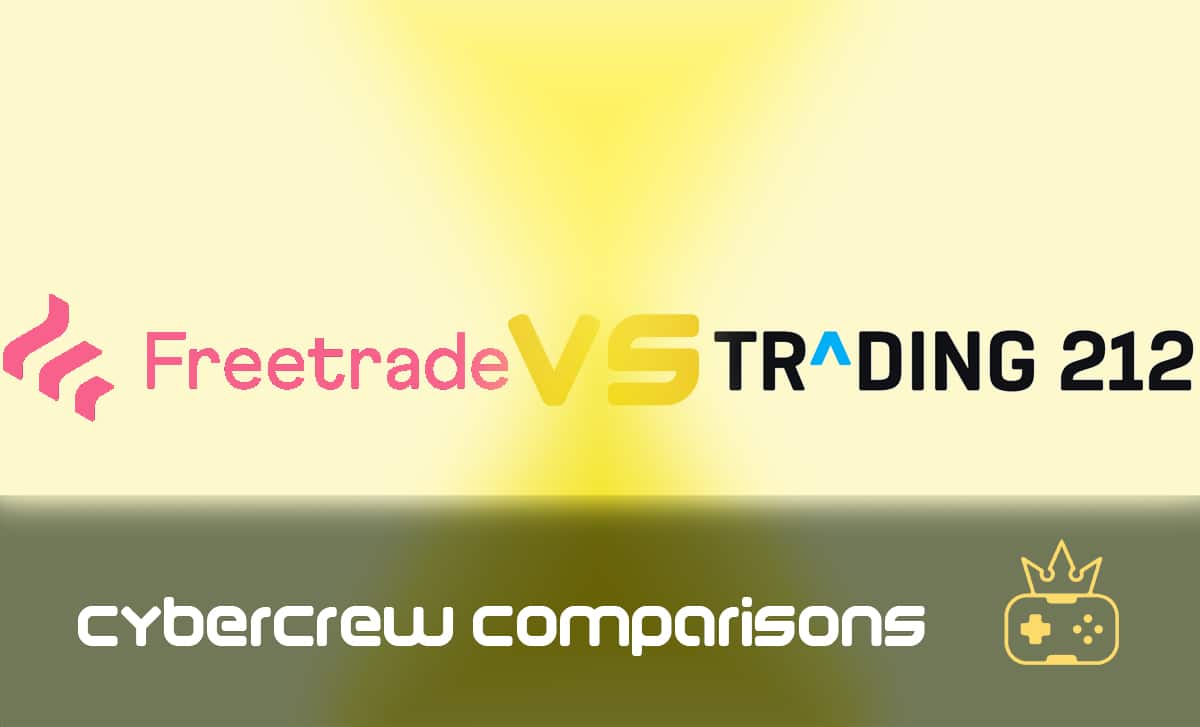UK Online Shopping Statistics [2024]
Last Updated: February 9, 2024
E-commerce is the latest mainstream retail trend to hit the UK over the last decade. Even though e-commerce portals have existed for much longer, they have only started seeing mainstream attention over the previous few years. The growth of online shopping in the UK has been staggering in keeping up with the rest of the world.
A big reason why e-commerce has skyrocketed in popularity is the spread of the coronavirus pandemic. The pandemic made it difficult for shoppers to visit retail stores in person, making e-commerce the only option.
However, this does not mean that e-commerce is a fad. The sheer convenience and range of options provided by e-commerce imply that this is a trend that is here to stay.
Here are some essential UK online shopping statistics.
- E-commerce sales accounted for 27.1% of the total retail sales in the UK in January 2022.
- The total value of e-commerce sales in the UK was 693 billion British Pounds in 2019.
- Wholesale was the largest e-commerce sector in 2019 in the UK, totalling 214 billion British pounds in sales.
- Click and collect turnover in the UK is expected to be 11.9 billion euros in 2023.
- The user penetration for internet shopping in the UK reached 87% in 2020.
- The average revenue per user is expected to total £2.49k in 2022 in the UK.
- Amazon is the largest online retailer in the UK.
- In 2019, 33.3 billion British pounds of revenue was generated from online shopping through mobile phones in the UK.
- In 2020, 87% of the people in the UK made online purchases up from 78% in 2018.
- Clothing is the most bought item online in the UK with 64% of online shoppers.
E-Commerce Sales UK
E-commerce or Online Shopping Sales accounted for 27.1% of the total retail sales in the UK in January 2022
In 2020, internet sales in the UK skyrocketed during the coronavirus pandemic accounting for 36% of the total retail sales. People were increasingly taking their internet shopping as a safety precaution against the spread of the virus.
However, despite the pandemic, physical retail remains the dominant way in which UK citizens shop which might be the reason for the decrease in the percentage of internet sales more than a year later.
E-commerce sales were just 19.1% of total sales in the UK before the pandemic
The market share of UK online sales was on the rise even before the start of the pandemic, however, the rate of increase was much slower. Before the pandemic started, e-commerce sales increased from 15.4% in May 2017 to 19.1% in February 2020.
Wholesale was the largest e-commerce sector in 2019 in the UK, totalling 214 billion British pounds in sales
The wholesale industry saw the highest amount of internet sales in 2019. However, other sectors were not too far behind. The ones that saw high sales amounts include manufacturing, transport and storage, information and communication, etc. The manufacturing sector witnessed the second-highest internet sales of 188.1 billion British pounds.
EDI (Electronic Data Interchange) accounted for e-commerce sales worth 336 billion British pounds in 2019
EDI sales refer to sales that were conducted electronically but not through a website. EDI sales are one of the primary ways in which businesses and institutions make their purchases. Traditionally, these sales were conducted through paper. However, the ongoing digital transformation has led to these sales being conducted electronically.
E-commerce sales worth 356.4 billion British pounds were conducted through websites in 2019
Websites are still the dominant way in which e-commerce operates. Businesses reach potential customers through their websites. It is not surprising that websites are responsible for more internet sales than EDI since most retail customers do their internet shopping through websites.
The total value of monthly internet retail sales in the UK was 2.03 billion British Pounds in January 2022
The value of internet sales has been steadily rising in the UK. Greater consumer awareness and mobile penetration account for this increase. More and more retailers are taking their business online, contributing to the total UK online sales.
Online retail sales in November 2020 in the UK reached a peak of 3.2 billion British pounds
Online retail sales peaked in November 2020 for the period between January 2016 and November 2020. This rise in e-commerce sales can be attributed to the global pandemic, which caused several consumers to turn online to conduct their shopping for safety concerns. The increase in sales in November can be attributed to the beginning of the holiday season in which consumers buy gifts for themselves and their families.
Click and collect turnover in the UK is expected to be 11.9 billion euros in 2023
Click and collect is quickly rising in popularity in the UK since merchants do not charge a delivery fee for click and collect services. Click and collect offers a convenient shopping option for shoppers who want the best of both worlds. In 2013, the click and collect turnover in the UK was just 3.2 billion euros, which shows the incredible rate at which this service is growing in demand.
E-commerce revenue is expected to grow at a CAGR of 11.03% between 2022 and 2025 in the UK
The overall trend for UK e-commerce looks overwhelmingly positive when looking at internet shopping statistics such as this one. People are flocking towards e-commerce due to added convenience, and the spread of the coronavirus has considerably sped matters up. While e-commerce will not replace physical shopping any time soon, the overall forecast looks promising for online businesses.
Online Retail and Online Shoppers
The user penetration for internet shopping in the UK reached 87% in 2020
User penetration in e-commerce refers to the number of shoppers in an area that shopped online in a particular region. The user penetration for UK e-commerce is relatively high in the UK, further enforcing the overall positive trend for the industry. The online purchase penetration rate has also been increasing over time, thanks to the greater awareness among shoppers and the growth of online merchants.
The average revenue per user is expected to total £2.49k in 2022 in the UK
Rather than just shop for groceries, customers are also making large purchases online. That is evident from the high average revenue per user. The increase in ARPU bodes well for the e-commerce industry since it shows the success of their business model when compared to traditional physical retail stores.
Business-to-consumer e-commerce sales in the UK totalled 197.1 billion British pounds in 2019
Business-to-business internet sales lagged behind business-to-consumer sales in 2019 and all previous years, going up to 2014. This statistic takes into account all sales that were conducted through websites in the UK. Only retail sales made by the companies with more than ten employees were included in the findings.
Online retail sales in department stores grew 157.2% year-over-year in 2020 in the UK
The fastest-growing internet shopping sector has been departmental retail stores which posted record sales growth. Other sectors that saw a significant increase include household goods stores and all-food stores. However, some sectors saw a decline in 2020 compared to 2019. Textiles, clothing, and footwear stores saw a drop of 48% compared to 2019.
Home-related goods saw 13.6% year-over-year growth in 2020 in the UK and were the best performer
The home goods sector is expected to be the top-performing segment in retail e-commerce in the UK based on past data. Customers may prefer shopping for home goods online since they can browse a much larger variety of products than physical retail stores. In comparison, the e-commerce market for apparel is expected to decline as consumers prefer to try their clothes before purchase.
Online retailers witnessed a sales growth of more than 50% between 2013 to 2018
Retailers are increasingly taking their business online, offering consumers the option of shopping both online and offline. Based on expenditure, online retailers have seen unprecedented sales growth through online channels. That demonstrates the overall e-commerce growth as well.
Offline retailers witnessed a growth of less than 10% between 2013 to 2018
The relatively slow sales growth rate of offline shopping shows how consumers prefer to shop online. Offline stores include retail parks, malls, and town centres. However, this does not mean that offline shopping is dead. On the contrary, retailers can take advantage of an offline as well as an online presence.
M-Commerce
In 2019, 33.3 billion British pounds of revenue was generated from online shopping through mobile phones in the UK
Mobile internet shopping penetration has been steadily increasing in the UK over the last decade. This increase is likely caused by the proliferation of mobile apps, which make shopping easy and convenient. Customers can shop on the go through their mobile phones while commuting or doing anything else. The sharp rise in m-commerce is evident because mobile shopping only accounted for 9.9 billion British pounds in 2013.
In the first quarter of 2020, 34% of tablet owners reported doing internet shopping through their tablets
The number of respondents for this survey was 1004. This statistic shows that online tablet shopping is a significant part of online shopping in the UK. As it becomes more convenient to shop through tablets, more and more consumers may make it their preferred way of online shopping.
The conversion rate for online shoppers using desktops was 6.4% during the third quarter of 2021
The conversion rate refers to how many shoppers bought a product compared to the number of users who viewed the product. The conversion rate for online desktop shoppers has broadly hovered around the 5% mark between the third quarter of 2019 and the third quarter of 2020 but it has significantly increased since then. The conversion rate is an essential factor to measure success in the online-retailing space.
The conversion rate for online shoppers using tablets was 4.4% during the third quarter of 2020
The conversion rate for tablets was slightly low compared to the conversion rate for desktops during the third quarter of 2020. The tablet conversion rate saw a dip from 4.5% during the third quarter of 2019 to 4.4% during the third quarter of 2020.
The mobile conversion rate for online shopping was 3.5% during the third quarter of 2021 in the UK
When compared to desktops and tablets, the conversion rate of mobile shoppers was the lowest. That may be because consumers are more likely to be browsing casually through their mobile phones.
In 2019, almost half of all total annual revenue of online shopping companies came from mobile shoppers
There has been a sharp rise in the share of mobile revenue for online shopping companies. In 2013, the percentage of mobile shoppers was only 25% compared to other devices. Hence, we can conclude that there is a strong positive trend of growth in the number of mobile shoppers in the UK.
The average order value (AOV) of online shopping orders that came through mobile phones was 66.8 British pounds during the third quarter of 2020
The average order value was highest for desktop users clocking in at 92.5 British pounds, while it was lowest for mobile users, being 66.8 pounds. That shows that consumers shop for lower value items when shopping through their mobile phones when compared to their desktops or tablets.
In 2020, approximately 32% of millennials were making payments through digital or mobile wallets
The age group that adjusted most quickly to mobile wallets was generation Z, as almost half of all people in the age group used mobile wallets to make payments. In contrast, only 28% of the Gen X age group (aged 40 – 54) reported making payments through mobile wallets. Most online retailers in the UK offer the option to make payments through digital wallets.
The number of mobile payment users in the UK is forecasted to increase by four million between 2020 and 2025
The number of people making payments through their smartphones is expected to rise quickly with growing consumer awareness. The rate of adoption of mobile payment methods is quite high thanks to the added convenience of using mobile payment methods and the growing importance of e-commerce.
Google Chrome was the most popular browser in the UK in 2021, accounting for a 48.97% market share
Since Google Chrome was the most popular browser with a market share of 48.97% in 2021, it may also be safe to say that the highest amount of online shopping was also done through Google Chrome. The second-most popular browser in the UK was Safari, with a market share of 33.72%.
Amazon is the largest online retailer in the UK.
People turn to Amazon, the biggest online retailer in the UK, most frequently when they want to shop online in the UK. Most people have online shopping accounts open with Amazon. There may be several reasons for this, but the most likely reason is that consumers can shop for almost everything in a single place.
Multi-channel Retail
In 2019, Argos was the leading multichannel retailer in the UK. Argos is primarily a catalogue retailer of consumer electronics, household appliances, and homeware
The UK is one of the most exciting markets in Europe when it comes to multichannel retailers, with many large-scale ones applying the basic tenets of multichannel retail. Argos scored 87 out of 100 in its multichannel score. It was closely followed by furniture retailer B&Q with a score of 85 and shoe-seller Schuh with 83.
Smythson, the luxury leather goods company, was one of the lowest-rated multichannel retailers in the UK in 2020 with a score of 44 out of 100
Implementing multichannel retail operations can be difficult, and there were several low performers on the list. In 2020, the lowest-rated multichannel retailer in the UK was homecare and personal products retailer Crabtree & Evelyn, with a score of 36 out of 100.
Only 33% of UK consumers were found to know about the click and collect option in 2018 and had used it in the last three months
A 2018 survey found that almost half of UK consumers are not aware of click and collect services offered by online retailers. Thus it remains a largely unknown innovation in the retail industry in the UK.
Online Shoppers
In 2020, 87% of UK internet users made online purchases up from 78% in 2018
The online shopping penetration in the UK is quite high when compared to other countries. The penetration has also been steadily increasing over time. In 2008, only a decade ago, online shopping penetration in the UK was only 53%.
9% of German shoppers surveyed in 2018 said they had shopped online with a retailer based in the UK
The international value of e-commerce should not be ignored, as shoppers from many European countries choose to shop in UK-based online retail stores. Germany led the list with 9% saying they shopped online from a UK store. France was a distant second with only 4% making such a purchase. That demonstrates that online retail in the UK, albeit small, has a big global footprint.
Clothing is the most bought item online in the UK in 2022 with 64% of online shoppers
Shopping for clothes online remains the most popular way in which consumers use e-commerce. Even though consumers cannot try the clothes before purchasing, people prefer to shop for clothes online due to the availability of a wide range of clothes and the added convenience when shopping from internet retailers.
Books, movies, music, and games are the third most popular physical items that UK shoppers shop for online in 2022
38% of shoppers in the UK said that they purchased books, movies, music, and games online. The most likely reason for these items to be bought online is the vast selection of available and discounted prices provided by online shopping platforms.
The age group between 25 and 34 saw the highest share of individuals making online purchases with 99% in 2020 in the UK
One of the most interesting e-commerce statistics is that people between the ages of 25 and 34 were the most active in shopping online in 2020 in the UK. That may be because young people are relatively more internet-savvy when compared to their older counterparts. E-commerce is still a relatively new concept, yet 65% of people aged 65+ said they had shopped online in 2020.
A survey conducted each year between 2018 and 2020 found that the two most popular reasons for shopping online are the lower price and the large variety of products available
E-commerce platforms can offer a much more extensive range of products than physical stores, making e-commerce have a distinct advantage over brick-and-mortar counterparts. They also do not have to maintain costly stores in prime locations, which leads to a reduction in prices that they can offer. Top online retailers like Amazon are widely popular amongst consumers due to these reasons.
In 2019, PayPal was the most commonly used method of paying online in the UK
PayPal may have derived much of its popularity from being a first-mover in the digital payments space. Around 49% of online shoppers used PayPal to make their purchases in the UK which should be a more widely known e-commerce fact.
A survey in 2019 found that 38% of UK consumers shopped online at least once a week, which was more than any other region surveyed
The survey consisted of more than 4,500 shoppers, and it found that the UK online market was one of the most active markets in the e-commerce space. By comparison, only 26% of people in the US said they shopped online at least once a week.
Wrap Up
As the above online sales statistics demonstrate, e-commerce has grown exponentially in the UK. Consumers are taking to shopping online in far greater numbers than they used to. The ongoing coronavirus pandemic is expected to push these numbers even higher as consumers prefer to shop from home for safety reasons. Thus it would seem the online shopping increase in the UK during COVID is concurrent with the rest of the world.
Clothes, food, and home appliances are some of the most common items people shop for online. These online shopping growth statistics of the UK show that the UK is one of the fastest-growing e-commerce markets in the world.
The digital shopping trend is here to stay, whether anyone likes it or not. The growing e-commerce footprint is an intrinsic part of the internet revolution shaping the world in the 21st century.
We hope that you have enjoyed our UK online shopping statistics.


![How to Sell on Depop in the UK [2024 Guide]](https://cybercrew.uk/wp-content/uploads/2023/06/Selling-on-Depop-UK.png)








